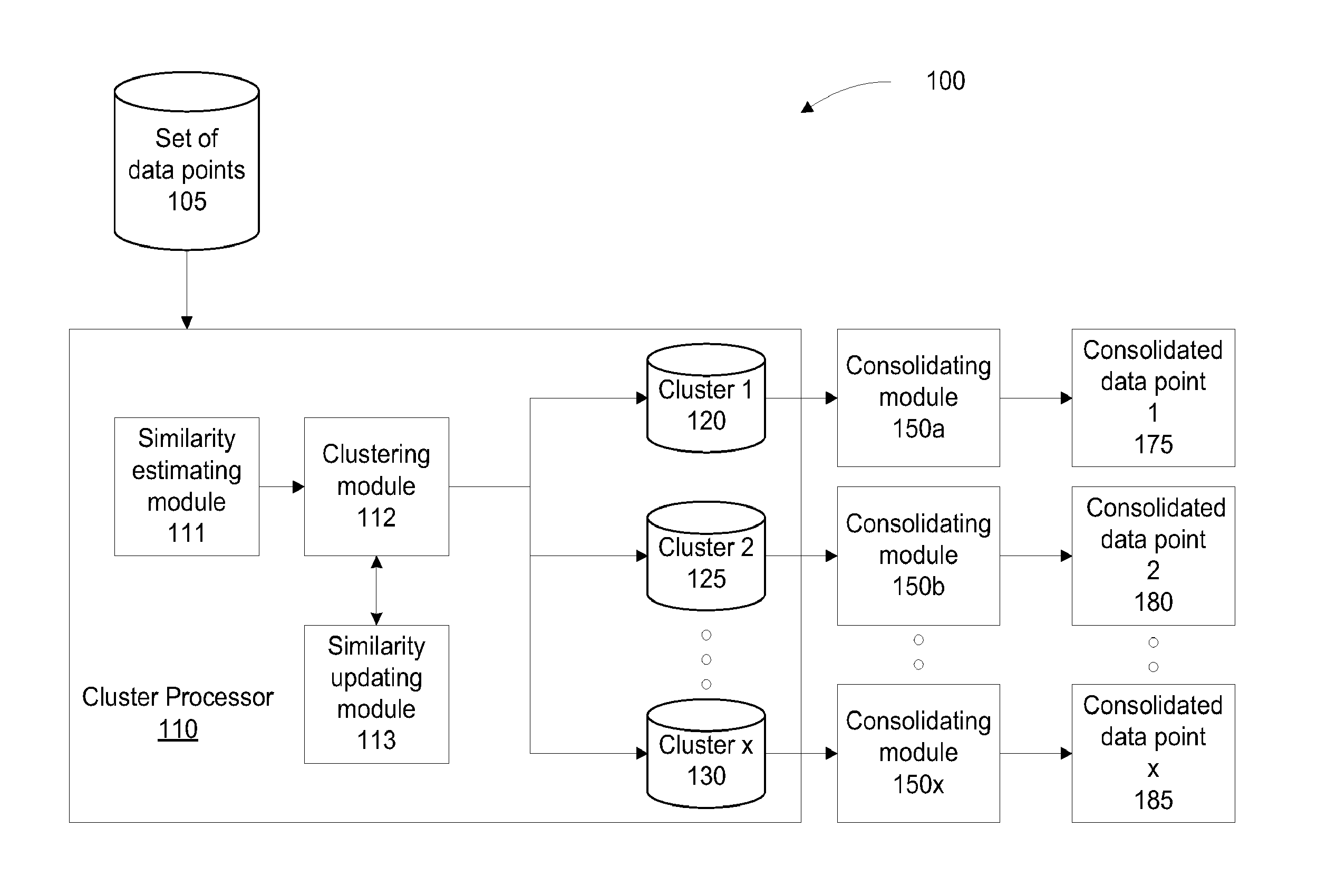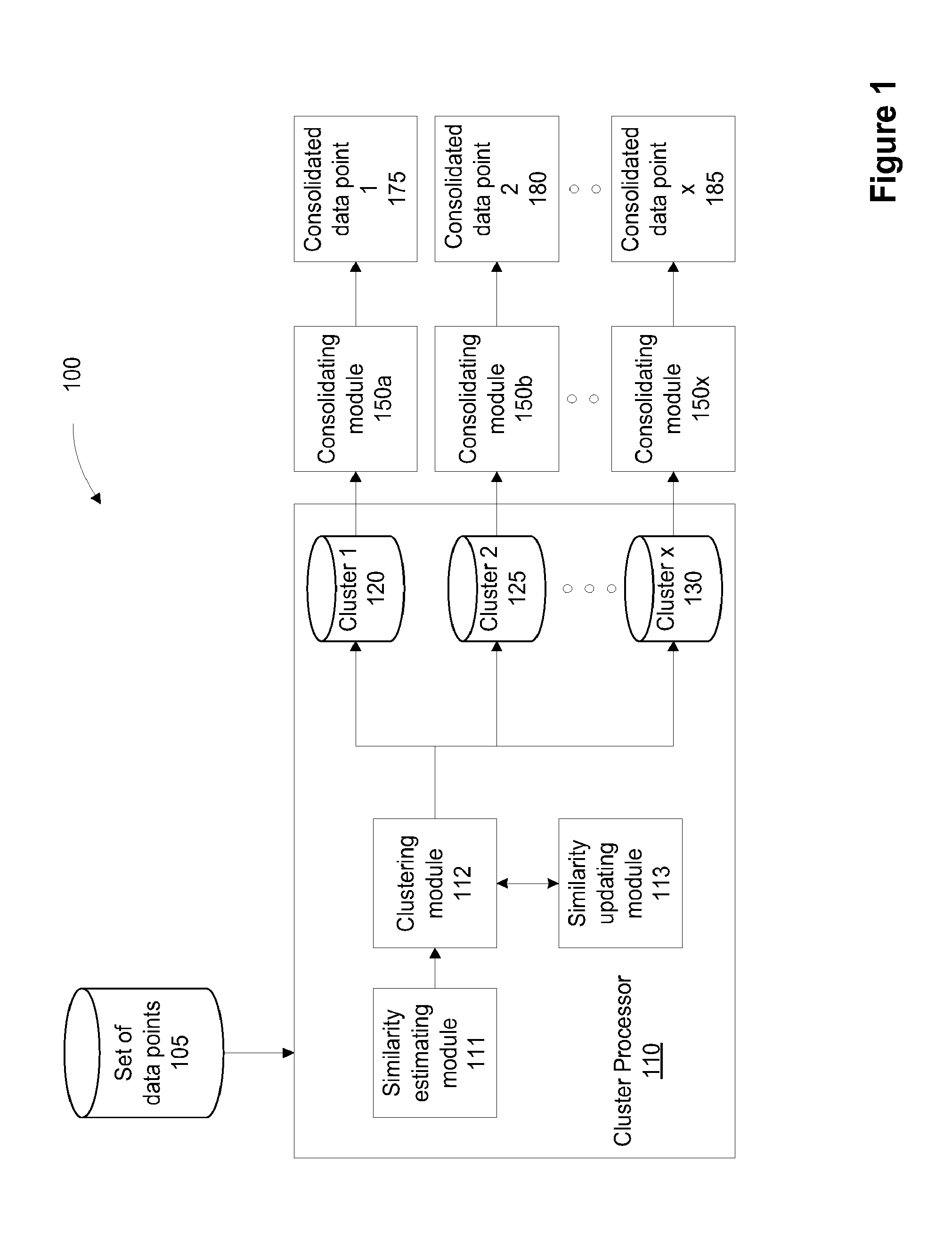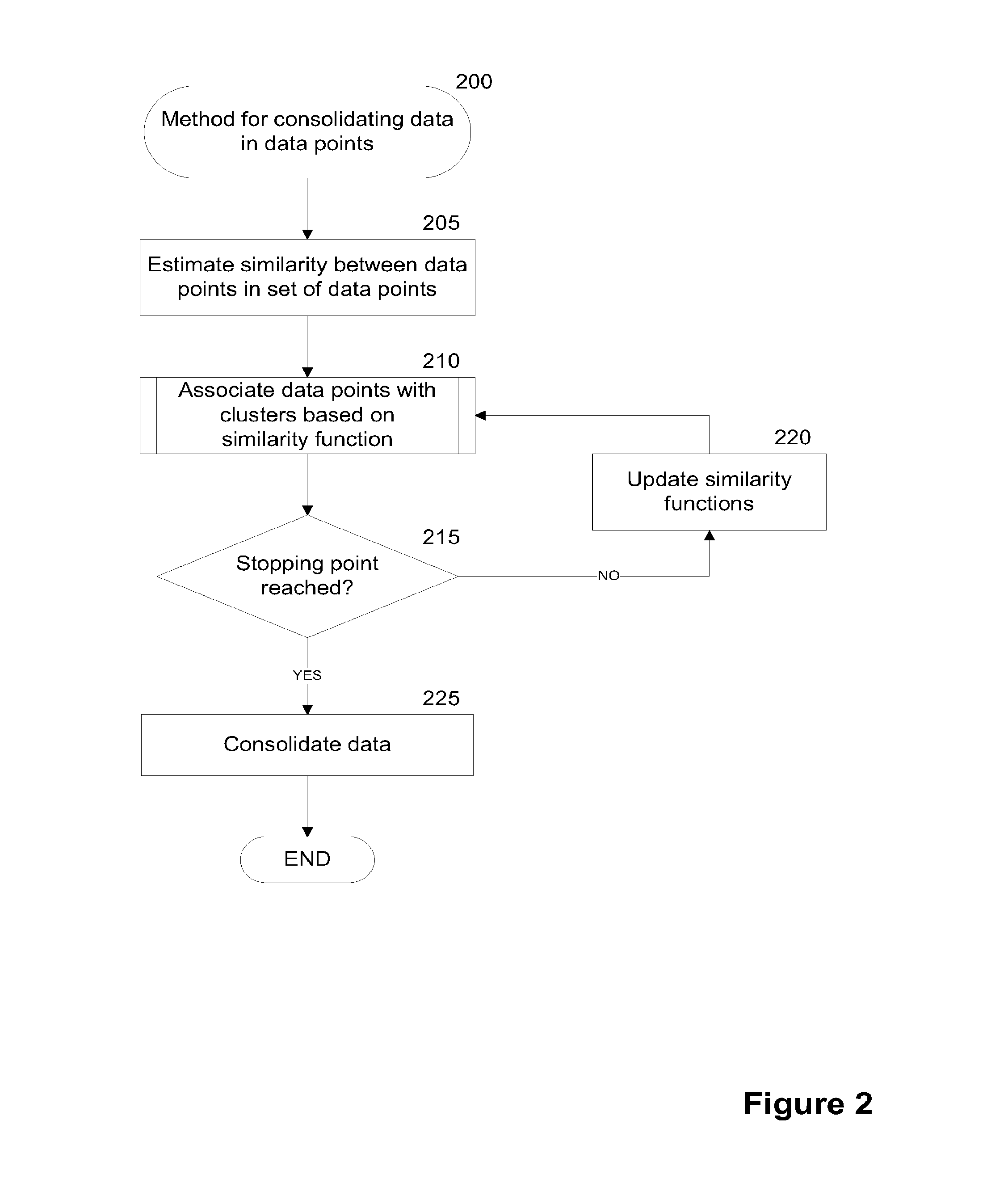Method and System for Clustering Data Points
a data point and clustering technology, applied in relational databases, databases, instruments, etc., can solve problems such as not allowing practitioners to separate between the computation of similarity functions and the conversion of similarity functions into proper functions
- Summary
- Abstract
- Description
- Claims
- Application Information
AI Technical Summary
Benefits of technology
Problems solved by technology
Method used
Image
Examples
example
[0053]To illustrate the operation of one embodiment of the invention, an example is provided. The example disclosed herein is not intended to limit the scope of the foregoing disclosure, and instead, is provided solely to illustrate one particular embodiment of the invention as it relates to one specific set of data points 400.
[0054]FIG. 4 is a block diagram depicting estimated pairwise similarity functions according to an exemplary embodiment. In this exemplary embodiment, a set of data points 400 includes four data points 406-409. Each data point includes data relating to a pizza restaurant. For example, data point 406 includes the name “Joe's Pizza” and address “265 Main St #5” of a pizza restaurant, and data point 409 includes the name, telephone number, and website of another pizza restaurant.
[0055]The data points 406-409 are depicted in the set of data points 405 with pairwise similarity functions “h” estimated by similarity estimating module 111. Per the convention described ...
PUM
 Login to View More
Login to View More Abstract
Description
Claims
Application Information
 Login to View More
Login to View More - R&D
- Intellectual Property
- Life Sciences
- Materials
- Tech Scout
- Unparalleled Data Quality
- Higher Quality Content
- 60% Fewer Hallucinations
Browse by: Latest US Patents, China's latest patents, Technical Efficacy Thesaurus, Application Domain, Technology Topic, Popular Technical Reports.
© 2025 PatSnap. All rights reserved.Legal|Privacy policy|Modern Slavery Act Transparency Statement|Sitemap|About US| Contact US: help@patsnap.com



